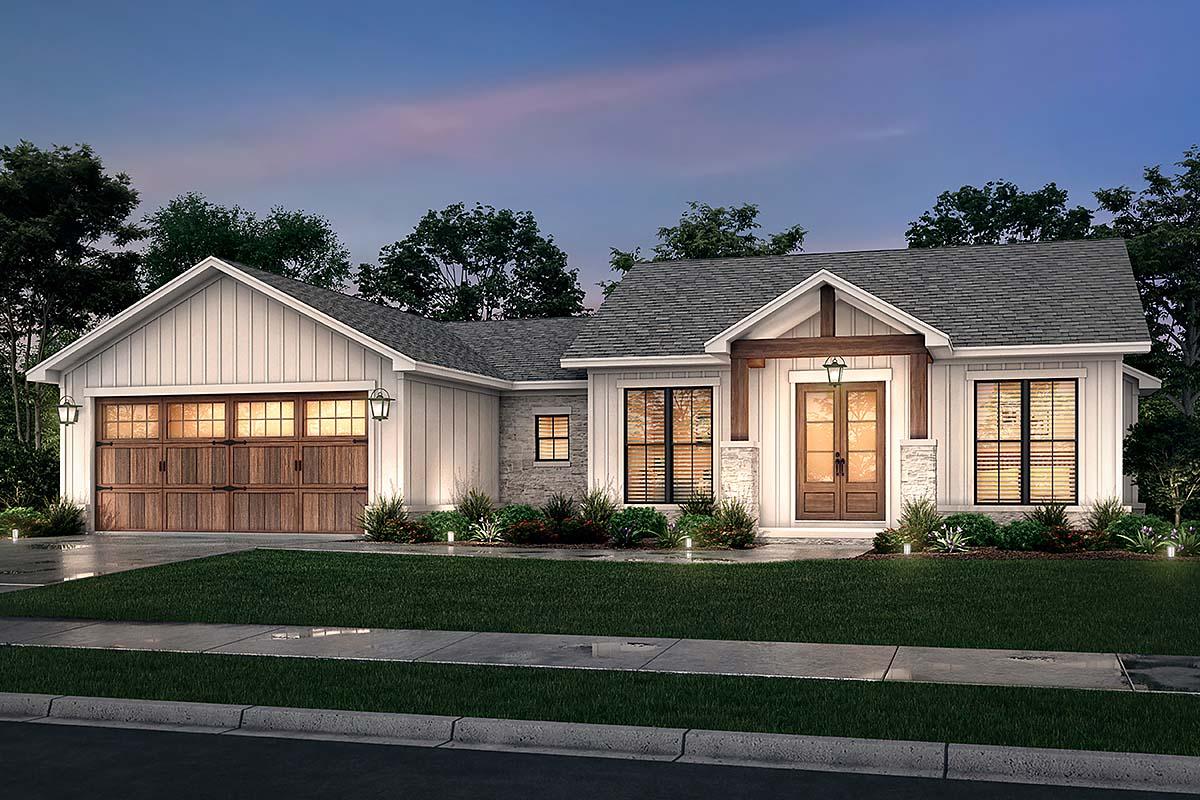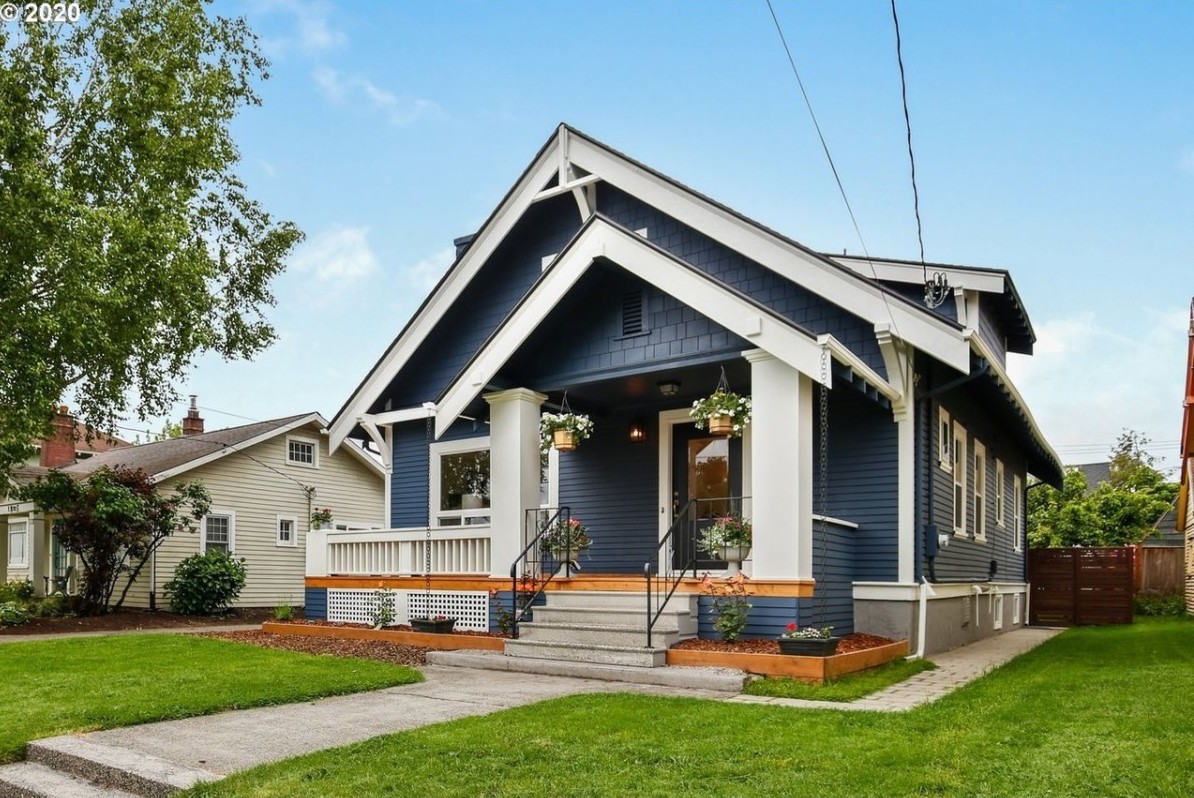The Role of Arts & & Crafts Architects in Elevating Architectural Solutions in Residential Style
Arts and Crafts architects substantially influence household style with their dedication to craftsmanship and sustainability. They focus on handcrafted details and all-natural products, which boost both visual appeals and neighborhood identity. By involving clients in the design procedure, these architects develop unique space that reverberate with personal tastes. This approach elevates inquiries regarding the future trajectory of property architecture and its potential influence on area dynamics. craftsman style house. What lies in advance for this ageless style viewpoint?

The Principles of Arts and Crafts Architecture
The essence of Arts and Crafts architecture lies in its commitment to craftsmanship and simplicity. This architectural activity arised in the late 19th century as a response to automation, stressing the worth of handmade information and all-natural materials. The principles of Arts and Crafts architecture prioritize functionality and harmony with the environment. Structures usually include low-pitched roof coverings, vast eaves, and revealed rafters, advertising a sense of unity with nature.
Artisans played a significant duty in this design, typically incorporating ornamental elements like tarnished glass, floor tiles, and woodwork, which reflect local workmanship. The shade combination tends to be natural and suppressed, enabling buildings to blend flawlessly right into their surroundings. Furthermore, the layout motivates open floor strategies and communal rooms, promoting a sense of togetherness. On the whole, the principles of Arts and Crafts architecture commemorate the charm of simpleness and the value of human connection to both nature and community.

Sustainable Practices in Residential Style
While the demand for ecologically accountable living remains to expand, sustainable methods in property layout have actually obtained substantial grip amongst architects and home owners alike. Architects are significantly including energy-efficient innovations and lasting products into their styles, aiming to minimize carbon footprints and boost energy conservation. Methods such as passive solar layout, eco-friendly roofings, and rainwater harvesting systems are coming to be common elements of modern-day property architecture.
In addition, the selection of in your area sourced products reduces transport discharges and sustains local economic climates. Focus on all-natural light and ventilation not only enhances interior air high quality yet also decreases dependence on artificial lighting and climate control systems. These lasting techniques mirror a commitment to protecting the atmosphere while supplying homeowners with comfy, efficient living rooms. As awareness of environmental issues grows, the combination of sustainability in property style is positioned to become a defining quality of contemporary architecture, directed by the principles established by Arts and Crafts architects.
Personalization and Personalization in Home Design
Customization and personalization in home design look at these guys have become key trends in response to the growing desire for unique living settings that mirror specific preferences and way check of lives. House owners significantly seek to customize rooms that resonate with their individualities, causing an extra meaningful connection with their home. craftsman style house. This motion motivates architects to involve customers in the layout procedure, fostering partnership that ensures the last end result symbolizes the home owner's vision
Components such as bespoke layouts, customized materials, and customized finishes enable for a diverse series of expressions in residential layout. Arts and Crafts architects play an essential role in this advancement, highlighting craftsmanship and top quality. Their concentrate on integrating artistic components with functionality warranties that each home is not only visually pleasing however also uniquely suited to the inhabitants' demands. This emphasis on customization improves the general property experience, developing spaces that are both individual and enduring.
The Effect of Arts and Crafts Architects on Area Aesthetics
As areas develop, the impact of Arts and Crafts architects substantially shapes their visual landscape. By highlighting handcrafted information, natural products, and conventional building and construction methods, these architects create homes that resonate with their surroundings. Their designs usually integrate local plants, textures, and shades, cultivating a sense of consistency between constructed atmospheres and nature.
Moreover, the Arts and Crafts activity advertises neighborhood identification through building connection. By motivating homeowners to embrace comparable style concepts, neighborhoods establish a natural character that improves aesthetic allure. This architectural uniformity not just improves the aesthetic experience however additionally infuses a sense of satisfaction among citizens.
The emphasis on sustainability and craftsmanship in Arts and Crafts architecture straightens with contemporary values, making these designs pertinent in contemporary setups. Eventually, Arts and Crafts architects add significantly to the total appeal and cultural stability of neighborhoods, leaving a long-term effect on their visual heritage.

Future Patterns in Arts and Crafts Architecture
With a raising focus on sustainability and customization, future patterns in Arts and Crafts architecture are poised to blend traditional workmanship with modern-day technology - craftsman style house. Architects are most likely to focus on environment-friendly materials, utilizing reclaimed timber and all-natural stone to boost the sustainability of household layouts. The combination of smart home technology will certainly end up being prevalent, enabling personalized living experiences without endangering visual integrity
Moreover, the rebirth of artisanal methods will promote a renewed appreciation for handmade aspects, such as bespoke cabinetry and customized tile job. Future styles may additionally mirror a focus on community-oriented spaces, motivating communication and link among residents. Outside living areas will certainly gain prestige, seamlessly incorporating nature right into the home atmosphere. As Arts and Crafts architecture evolves, it will remain to honor its roots while adjusting to modern requirements, developing harmonious areas reference that mirror individual worths and lifestyles.
Often Asked Inquiries
What Inspired the Arts and Crafts Motion in Architecture?
The Arts and Crafts motion in architecture was motivated by a reaction against automation, stressing handcrafted top quality, all-natural products, and a return to conventional workmanship, intending to create harmonious, functional areas that commemorated virtuosity and individuality.
How Do Arts and Crafts Architects Collaborate With Clients?
Arts and crafts architects work together with customers via open discussion, prioritizing personal needs and appearances. They emphasize craftsmanship and sustainability, promoting a partnership that integrates the client's vision with the designer's expertise in design and materials.
What Materials Are Typically Utilized in Arts and Crafts Residences?
Usual materials in Arts and Crafts homes include natural wood, rock, and brick, highlighting workmanship and natural looks. These components develop a cozy, welcoming atmosphere, reflecting the movement's dedication to high quality and simplicity in style.
How Do Arts and Crafts Layouts Boost Indoor Living Spaces?
Arts and Crafts designs enhance interior living rooms by advertising natural light, open layout, and handcrafted information. These components promote a warm, inviting ambience, encouraging a connection in between homeowners and their settings through thoughtful, useful aesthetic appeals.
What Are Some Famous Examples of Arts and Crafts Architecture?
Famous instances of Arts and Crafts architecture consist of the Gamble Residence, Greene and Greene's work of art in California, and the Robie Residence by Frank Lloyd Wright. These frameworks showcase handcrafted information and harmony with nature, defining the activity's essence.